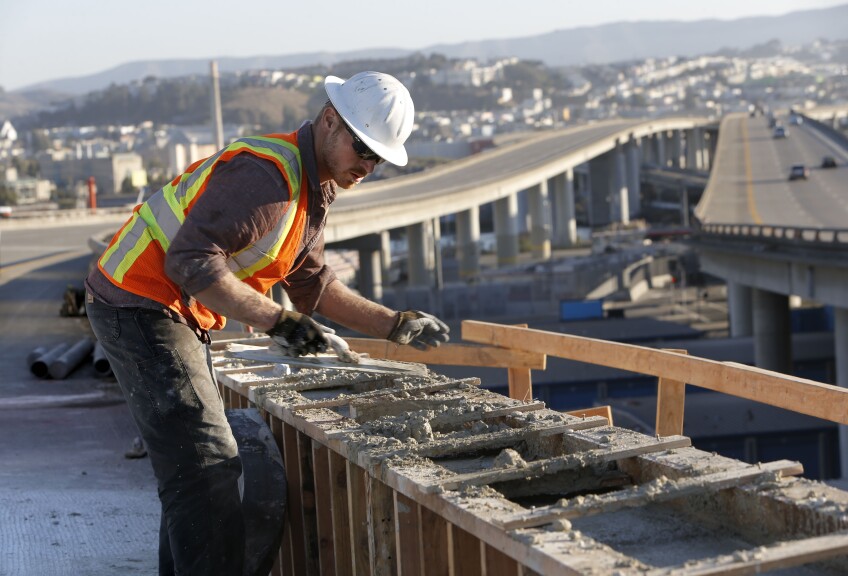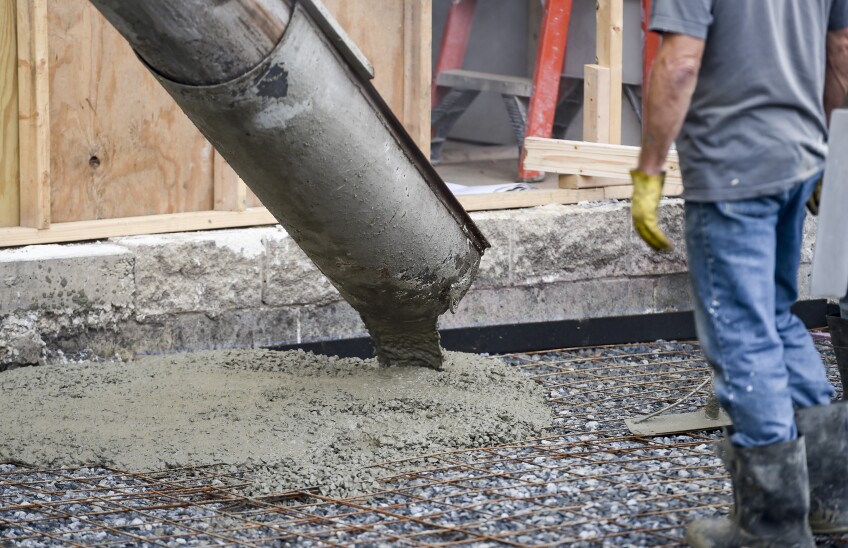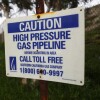As Billions of Dollars Go to California Infrastructure, Concrete Poses a Climate Threat

Money for heavy duty construction projects is pouring into California this year. In November President Biden signed a $1.2 trillion Infrastructure Investment and Jobs Act. The coming months will see some $5 billion dollars in road construction funds alone flow into the state, according to Senator Diane Feinstein’s office. There will also be nearly $2 billion per year for public transportation and an average of $800 million annually to repair California bridges.
Most in the state will welcome the upgrades, and the multiyear union construction jobs that come with them. But there is a hitch. The new construction will make it even harder for California to meet its climate commitments.
Infrastructure is built with concrete and steel. Producing concrete – including at many plants around Southern California – is an extremely emissions-intensive process. The concrete sector totals 8 percent of all carbon dioxide emissions globally. Some of this is because cement kilns burn through an immense amount of dirty fuel. But beyond that, over half of the emissions from concrete come from the chemical reaction at the heart of making cement, which releases carbon into the air.
There are several methods available to produce lower-carbon concrete to meet California’s infrastructure needs. Major cement makers know how to use them. Yet California is not planning to require lower-carbon concrete for its infrastructure projects.

"We see it as an enormous missed opportunity," said Sasha Stashwick, a senior advocate with NRDC who has worked to get language on cleaner procurement written into federal policy. As a part of that work, her organization calculated that you could get the benefit of taking 500,000-750,000 cars off the road for a year by requiring all road and bridge projects in the federal infrastructure plan to use 10-15 percent lower carbon concrete. For California roads alone, they said, it would be the equivalent of taking 20,000-30,000 cars off the road for a year.
Experts say that with the current methods and technology available, a 40% to50% reduction of emissions from concrete is easily within reach for manufacturers at a low or modest cost increase.
There is a broad suite of ways to lower the climate damage from concrete. When making their mixes, concrete plants often overuse cement, the ingredient that fuses sand, gravel and water together into solid concrete. Cement is the most emissions-intensive ingredient in concrete but there are several ways to use less, without compromising strength. You can use certain additives like clay, which can add strength and lower cement content. An alternative called Portland limestone cement can reduce carbon dioxide emissions in the final concrete by 10 percent and can easily be substituted for ordinary Portland cement. Waste from industrial operations like steel manufacture and coal-fired power plants can also substitute for cement and make concrete stronger, though it should be noted that the processes that generate this waste still emit high levels of CO2. Lastly, manufacturers can simply give the concrete more time to cure. It will get just as hard, but less cement is necessary if you give it more time.
If hundreds of billions of dollars are going to be spent on repairing roads, bridges, highways, tunnels . . . at least some portion of that spending should be going to low-carbon materials procurement.Sasha Stashwick, Natural Resources Defense Council Senior Advocate
Kathleen Hetrick, an engineer in Los Angeles with the global engineering firm Buro Happold, points out that when you reduce carbon dioxide, you also often reduce other co-pollutants, like soot and nitrogen oxides. "These are all opportunities to lower emissions and improve human health, and hopefully right some wrongs that have continuously faced parts of Los Angeles and all of California."
State and federal governments are often the largest purchasers of concrete. But the California State Department of General Services said in an email that it does not plan to require carbon reductions in the concrete it buys. It referred the question to Caltrans, as the largest state purchaser. Caltrans oversees construction and maintenance on 50,000 miles of paved road lanes and 13,000-plus bridges. The agency updated its rules on concrete just last October, but did not require suppliers to provide a cleaner product.
That’s even though cleaner concrete is available in Southern California. Many concrete suppliers already voluntarily count up the carbon dioxide released when they make their batches at each of their plants. They submit publicly-available labels that show carbon dioxide released in a product’s creation; these look a lot like food nutrition labels.
One place to see the labels is the app EC3, which stands for Embodied Carbon in Construction Calculator. Stacy Smedley, executive director of the group Building Transparency, points out the app already contains information on thousands of concrete mixes within a 40-mile radius of downtown Los Angeles.
For example, for one widely-used mix of concrete with strength of 5000-6000 pounds per square inch, there are more than 400 offerings near L.A. On average, those concrete mixes release nearly one thousand pounds of carbon dioxide into the air for every cubic yard (about the size of a washing machine).
But about half of the concrete of that type in the app emitted less than that, some 25 percent less. Agencies could be requesting these mixes.

In Southern California, the majority of the voluntary declarations in the EC3 database were submitted by the company National Ready Mixed, headquartered in Encino. Cemex, which has 20 plants from Santa Paula to San Juan Capistrano, and CalPortland, with six facilities ranging from El Segundo to Santa Fe Springs, also submitted several hundred.
Southern California does have projects underway that use lower-carbon concrete, though none of them are state infrastructure projects. A 57-story residential tower in downtown L.A., between the 7th Street Metro stop and the 110 Freeway, reduced its built-in carbon by 24 percent, largely by requiring lower-carbon concrete mixes, according to engineering contractor Magnusson Klemencic Associates (MKA). The reduction is measured against the original bids MKA got from suppliers, said Donald Davies, company president. Hetrick gave the new Academy of Motion Picture Arts and Sciences Museum as another example.
Many people are working to increase the push from purchasers to give preference to concrete companies that employ carbon cutting methods. There are also efforts at the state level to regulate the concrete industry directly.
In the city of Malibu, and in Los Angeles and Ventura counties, some groups are backing an ordinance that would require cleaner concrete after Marin County in the north pioneered the first ordinance in 2019.
Senator Josh Becker last year passed the first law to require reductions in carbon from the entire cement industry. Specifically, the California Air Resources Board will have until July 2023 to develop a strategy to reduce all emissions from cement in the state to 40 percent below 2019 levels by 2035.
This year he hopes to take the next step.
"What I’m working on for this year is to have the California state government buy low carbon concrete and cement," said Becker. "We start it in California, and then we take it across the country." Bills like this are often known as "Buy Clean" legislation. As currently written, the bill would require winning bidders on state contracts to reveal the carbon emitted in the making of their concrete. In subsequent years, state agencies like Caltrans would be required to give preference to bidders offering lower-carbon material.
In an announcement last month, President Biden issued an executive order with a Buy Clean policy, promising to "launch a ‘buy clean’ initiative for low carbon materials." Stashwick worked on getting that provision into the executive order.
"If hundreds of billions of dollars are going to be spent on repairing roads, bridges, highways, tunnels, this massive investment in American infrastructure, at least some portion of that spending should be going to low-carbon materials procurement," Stashwick said.
"It should be baked into the code for every single project, every single piece of infrastructure," added Hetrick.




